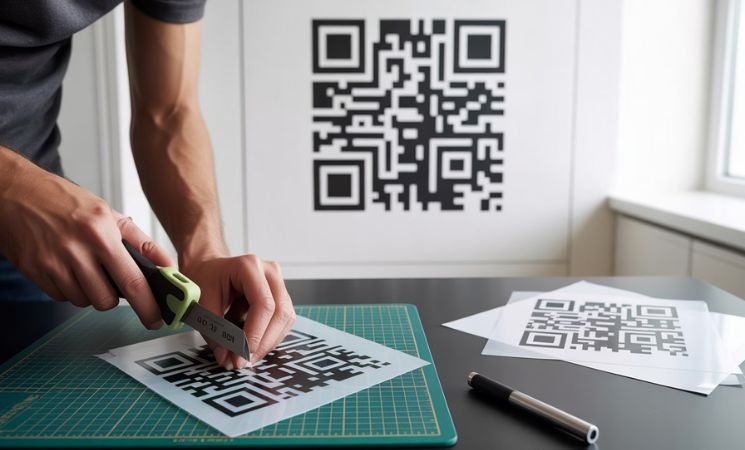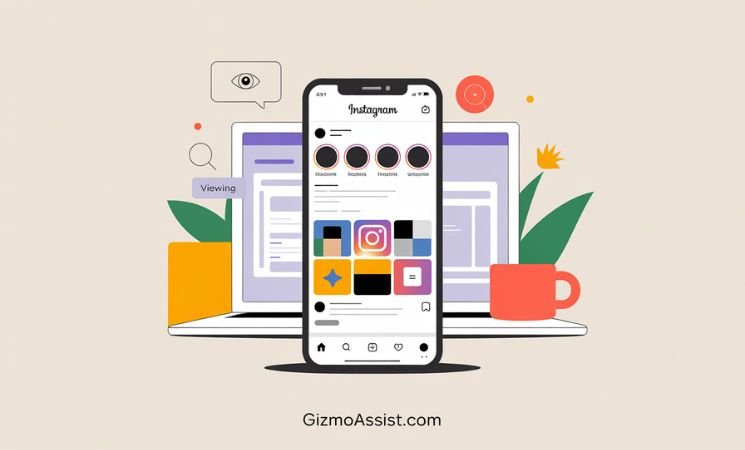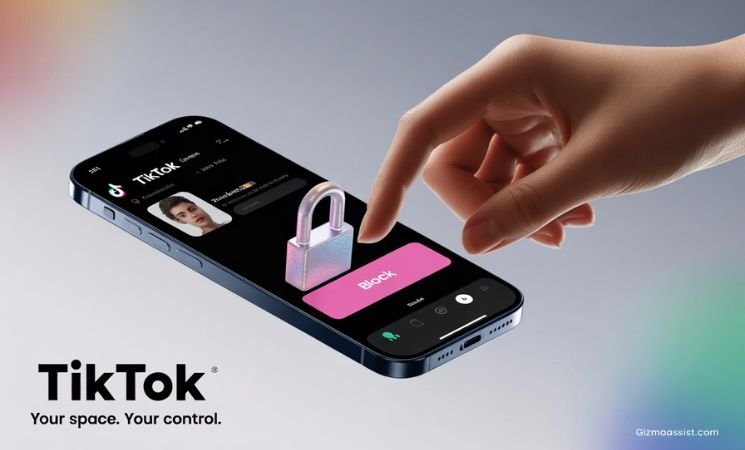You have seen QR codes everywhere. On menus. Posters. Packages. They are quick bridges from real life to the web. A QR stencil takes that idea and puts paint on it. You cut the code into a sheet, lay it flat, and spray. People scan the mark on the wall or box and land right where you want.
I like this because it feels hands on. It is cheap, fast, and a little bold. It works for a cafe window. It works for a mural. It even works on a shipping box that needs a simple call to action.
What a QR stencil really is?
It is a stencil that matches the code grid. Black modules become holes. White space stays solid. You push paint through the cut parts and the pattern appears on the surface. If the edges are clean and the contrast is strong, phones read it like any other code.
Two things matter more than anything. Keep a quiet border around the code. Keep the modules crisp. If you smudge that border or blur the tiny squares, scans fail.
What to gather before you start?
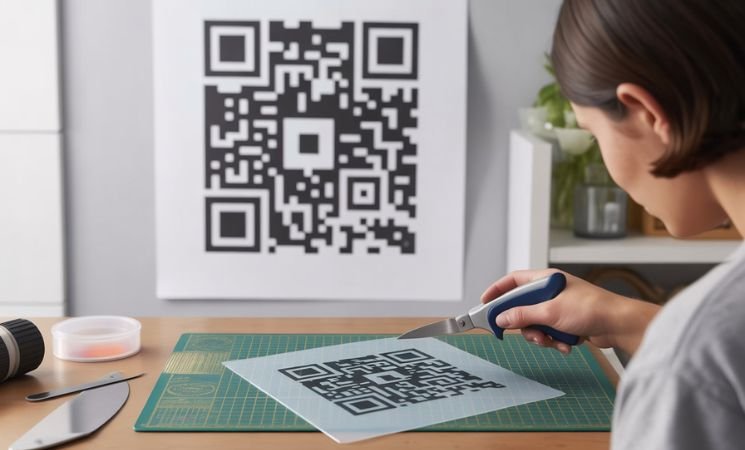
A phone to test with.
A QR code generator.
Any simple design tool. Canva works. Illustrator and Photoshop also work.
A sharp knife or a stencil cutter. A laser cutter is great if you have access.
A sheet to cut. Cardboard is fine for practice. Mylar or plastic lasts longer. Seven to ten mil Mylar feels sturdy and still bends.
Spray paint or a small roller. Masking tape. A cutting mat.
That is enough for your first run.
The way I make one
- Make the code.
Open a free generator. Use a short link. Pick high error correction. Save as SVG so it stays sharp at any size. - Prep the art.
Drop the SVG into your editor. Expand it to paths if the app asks. Add four modules of empty border on every side. That is your quiet zone. Do not let paint touch that area. - Decide the size.
Use a simple rule. Size in millimeters is about the scan distance in millimeters divided by ten. At one meter away, aim for about one hundred millimeters on the short side. Bigger is safer. - Make it stencil friendly.
QR patterns have many little islands. If you cut every black square out of a loose sheet, parts fall out. You have three options.
Use low tack adhesive vinyl so every island sticks down. Or spray the background and leave the code as the unpainted area. Or add tiny bridges that keep islands attached. Bridges are small links you add between shapes. Keep them thin and consistent so the code still scans. - Test on paper.
Print the code at the real size. Tape it to a wall. Scan from the distance you expect. If your phone locks on fast, move on. If it struggles, bump the size up. - Cut the sheet.
Tape the design to Mylar on a mat. Take your time. Long pulls with a fresh blade beat short hacks with a dull one. Clean corners matter more than speed. - Spray a sample.
Light coats. Hold the can above the stencil, not under it. Keep the sheet flat so paint does not creep. Two light passes beat one heavy pass. Peel the sheet, let it dry, and scan again.
That is the whole flow. It goes faster after the first try.
Tips I learned the hard way
Keep the can moving. A pause makes blobs.
Do not skip the quiet zone. Four modules of clean border saves the scan.
High contrast always wins. Dark code on a light surface is easiest.
If you add a logo, keep it small and near the center. Then test.
Seal cardboard stencils with clear spray if you want a few extra uses.
If paint bleeds, use spray adhesive on the back of the stencil for a light tack. Press it flat, spray, then lift.
Uses that actually get results
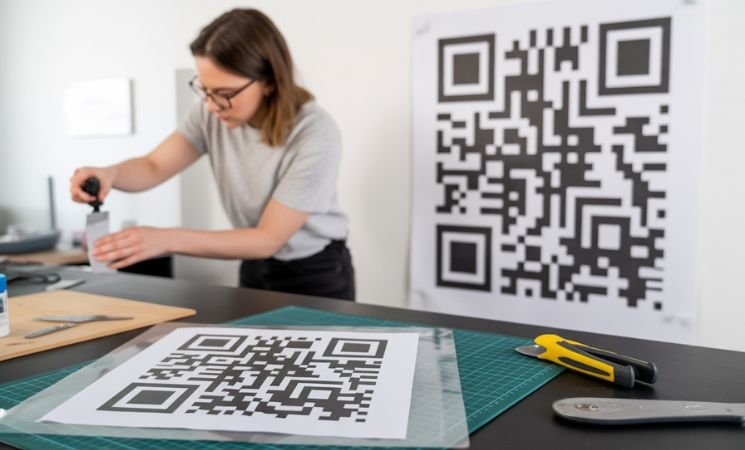
A shop can mark a door with a scan to order page. People point, scan, and skip a line.
Event teams can add a code on foam board signs that open a schedule.
Artists can link a wall piece to a song, a story, or a short behind the scenes clip.
Creators can mark a tote, a board, or a notebook with a code to a portfolio.
Small brands can add a code to a shipping box for easy reorder. No extra label needed.
Pick one place and try it. If you see scans rise in your site logs, repeat on every surface that makes sense.
Common mistakes and easy fixes
Too much data in the code.
Use a short link. Long strings make tiny modules that do not cut well.
Noisy surfaces.
Rough brick scatters edges. Use a smoother spot or roll on a base coat first.
Heavy spray.
Big passes flood the gaps. Use light coats. Let them stack.
Floppy sheets.
Thin paper lifts and leaks. Mylar stays flat. Plastic sheets work too.
Bridges in the wrong place.
If you add bridges, keep them narrow and even. Place them where they do not break clusters apart. Test, then add or move as needed.
Extra detail if you want cleaner scans
Error correction gives you room for small flaws. Set it to high in the generator. Keep the content short so the modules do not shrink.
If you must go small, increase line weight in the editor by a tiny step. That makes cuts less fragile.
If your phone struggles outdoors, glare is often the cause. Matte paint helps. So does shade.
Keep a spare cloth to dry a surface if there is dust or light moisture. Clean surfaces make crisp edges.
A quick run through for teams
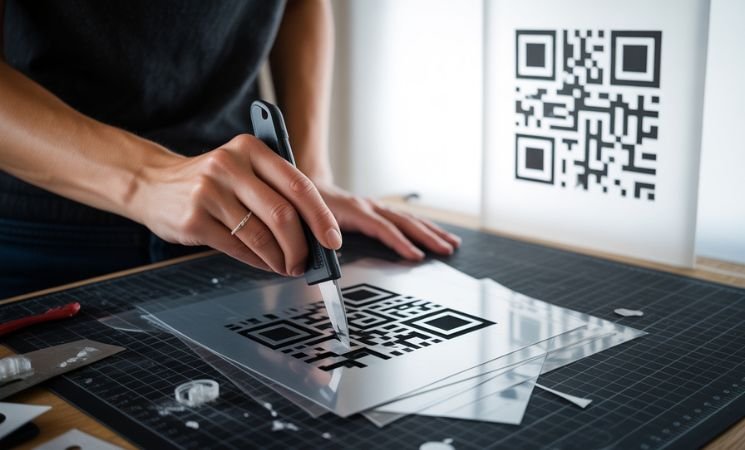
Pick the link.
Generate the code with high error correction.
Lay it out with a quiet border.
Cut a Mylar master.
Spray a test and scan.
Lock the colors and size in a short note so everyone repeats the same setup.
Wrap up
A QR stencil is simple, fast, and fun. It is also practical. You can turn any wall, box, or sign into a scan point. That gives you reach that stickers do not have and a look that print does not match. The first one takes patience. After that, you will move from idea to working mark in a single afternoon.
QR stencils are just one way to mix tech with creativity. If you enjoy trying new online tools that make tasks easier, explore GizmoAssist for more ideas.
Short answers to real questions
Yes. Shorter content scans better and cuts cleaner.
No. Light coats and clean edges keep it sharp.
Mylar or thin plastic. Cardboard is fine for practice.
Yes. Keep it subtle and test the scan after you place it.

